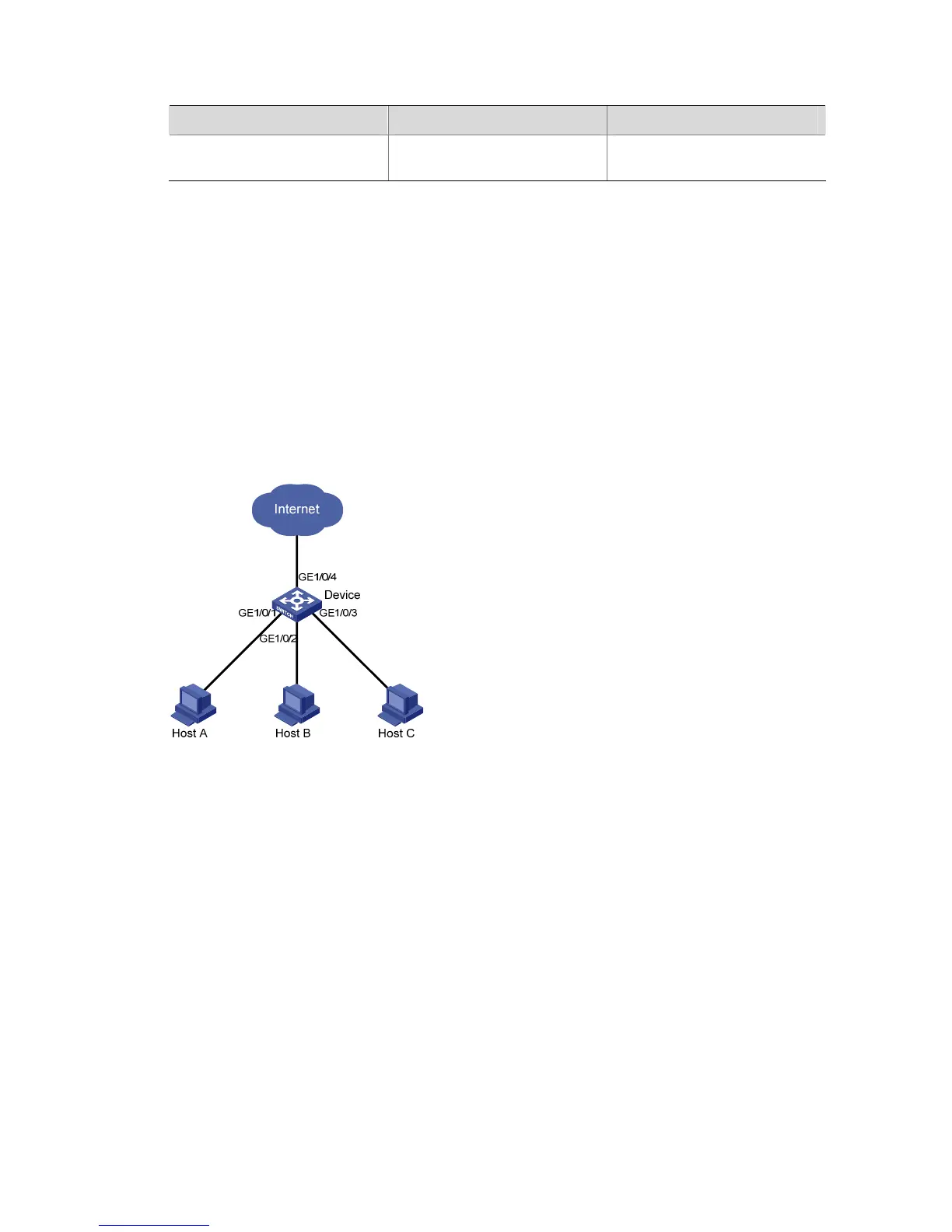3-2
Displaying and Maintaining Isolation Groups
To do… Use the command… Remarks
Display the isolation group
information
display port-isolate group Available in any view
Port Isolation Configuration Example
Network requirements
z Users Host A, Host B, and Host C are connected to GigabitEthernet 1/0/1, GigabitEthernet 1/0/2,
and GigabitEthernet 1/0/3 of Device.
z Device is connected to the Internet through GigabitEthernet 1/0/4.
z GigabitEthernet 1/0/1, GigabitEthernet 1/0/2, GigabitEthernet1/0/3 and GigabitEthernet1/0/4
belong to the same VLAN. It is desired that Host A, Host B, and Host C cannot communicate with
one another at Layer 2, but can access the Internet.
Figure 3-1 Networking diagram for port isolation configuration
Configuration procedure
# Add ports GigabitEthernet 1/0/1, GigabitEthernet 1/0/2 and GigabitEthernet 1/0/3 to the isolation
group.
<Device> system-view
[Device] interface GigabitEthernet 1/0/1
[Device-GigabitEthernet1/0/1] port-isolate enable
[Device-GigabitEthernet1/0/1] quit
[Device] interface GigabitEthernet 1/0/2
[Device-GigabitEthernet1/0/2] port-isolate enable
[Device-GigabitEthernet1/0/2] quit
[Device] interface GigabitEthernet 1/0/3
[Device-GigabitEthernet1/0/3] port-isolate enable
# Display the information about the isolation group.
<Device> display port-isolate group
Port-isolate group information:

